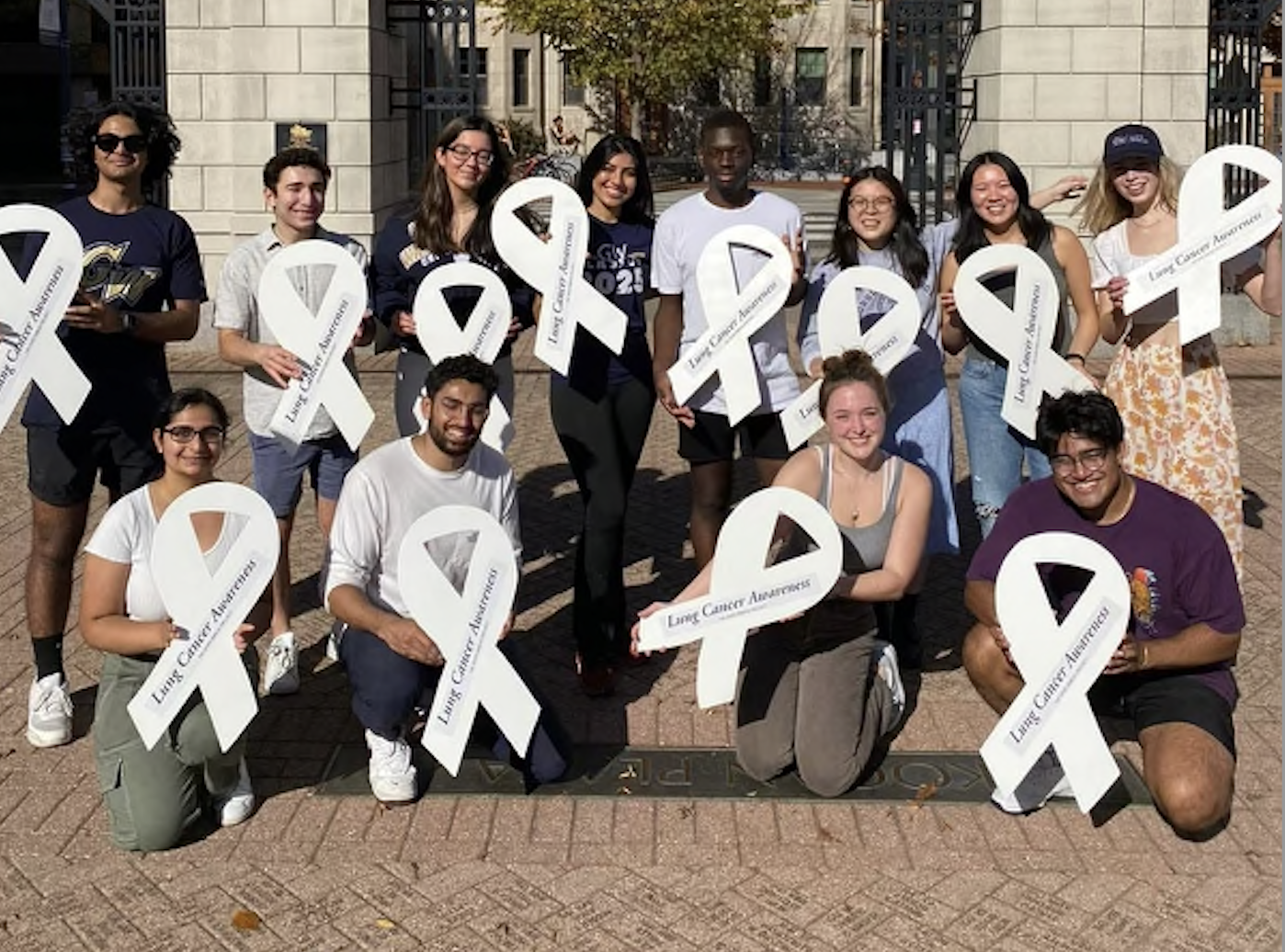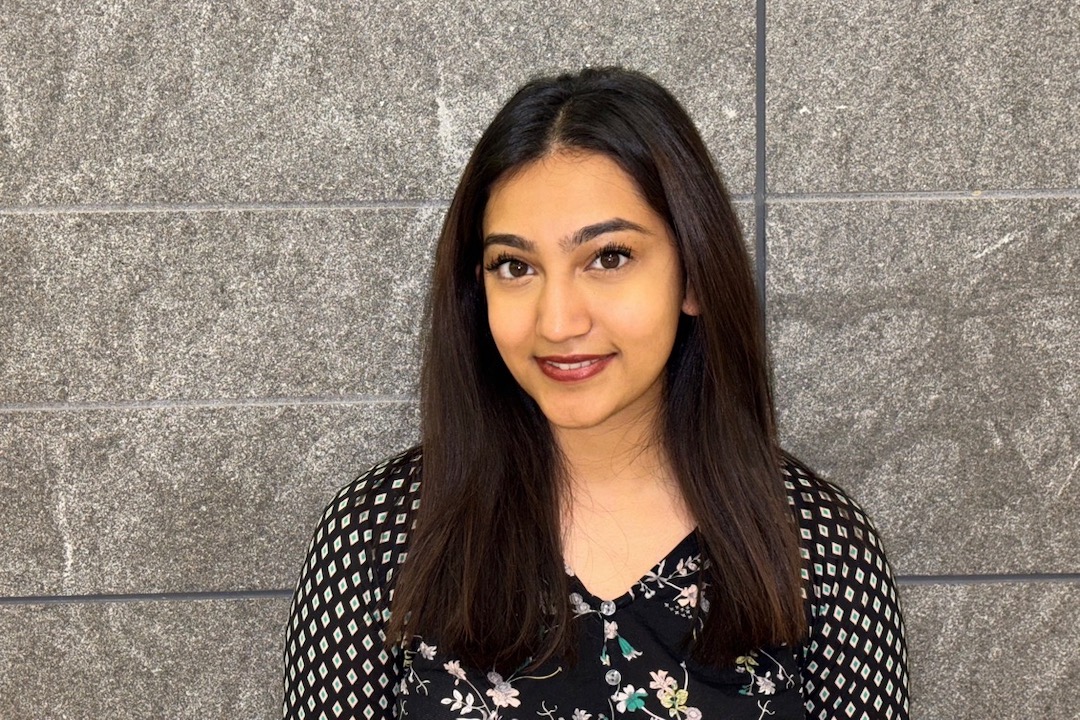Sometimes a book can change your life. When Shreya Papneja, now a junior majoring in neuroscience at George Washington University, read “When Breath Becomes Air” (Random House, 2016), a memoir by the late Paul Kalanithi, she was transformed into an advocate for lung cancer awareness.
Kalanithi’s posthumously published bestseller describes his diagnosis with lung cancer at the age of 36. The young neurosurgical resident, who died just weeks before his 38th birthday in 2015, gives readers a devastating account of his illness and mortality from the dual perspectives of doctor and patient.
“This book really shocked me,” Papneja said, “because usually when we think of lung cancer, we associate it with a heavy smoker and someone who is in old age or older.”
Galvanized into action, Papneja got involved in a movement dedicated to lung cancer patients and survivors. She is a national director of the American Lung Cancer Screening Initiative (ALCSI) and president of its GW chapter. The organization fights against barriers that prevent early detection of the disease, which claims more American lives annually than any other form of cancer. November has been designated Lung Cancer Awareness Month.
While early detection offers lung cancer patients the best chance of survival, screening is not readily available. In Washington, D.C., Papneja said, the lung cancer screening rate is alarmingly low.
“The screening rate for lung cancer nationally is just 5%,” Papneja said. “And in D.C., it’s only 3%. And for other cancers, such as prostate cancer and breast cancer, screening rates are 70 to 80%. So there’s a lot more we can do as a community to increase the screening rates.”
On Nov. 16, Papneja represented ALCSI at a press conference at the U.S. Capitol led by Rep. Debbie Wasserman Schultz (D-Fla.), to rally support for the bipartisan Increasing Access to Lung Cancer Screening Act (H.R. 4286), a bill that would require state Medicaid programs to cover lung cancer screenings for eligible patients. The bill is supported by several organizations including GO2 for Lung Cancer, LUNGevity and the Society of Thoracic Surgeons.
According to the American Cancer Society, there will be more than 1.9 million cancer diagnoses and 600,000 deaths in 2023, with lung cancer accounting for more than 154,000 deaths annually. The United States Preventive Services Task Force (USPSTF), an independent panel of experts in disease prevention, recommends annual lung cancer screenings for adults ages 50 to 80 with a significant smoking history. Unfortunately, just 5% of eligible Americans—and even fewer in underserved communities—are receiving annual screenings.
Current guidelines call for screening for people between 50 and 80 years of age who have a 20 pack-year smoking history and currently smoke or have quit smoking within the past 15 years. “If you smoke a pack a day for 20 years,” Papneja said, “that’s 20 pack-years. But if you smoke two packs a day for 10 years, that's also a 20 pack-year smoking history.” As a nonsmoker under those guidelines, she noted, Kalanithi did not qualify as being “at high risk” for lung cancer, but was diagnosed with stage IV metastatic lung cancer. Screenings should be more widely available, she said, and their availability publicized—particularly for underserved communities such as Black women.
“When screening Black women, we’re seeing in screening trials that women who don’t meet the 20 pack-year criterion are getting positive lung cancer screenings, even with low smoking histories,” Papneja said. “And in the USPSTF guidelines, they wouldn’t be eligible to get screened. We recommend broadening the guidelines—for example, reducing the pack-year smoking history to 10 or 15 years.”
People who fall under the guidelines for being at risk, Papneja added, can get free screening if they have certain insurance plans. But if they don’t fall under the guidelines, they have to pay for the screening, which can be a barrier. People should discuss with their doctors whether they should be screened for lung cancer, she added.
In November 2022, Papneja organized a group of volunteers to build and paint white ribbons out of plywood, which were then signed by members of the GW community and given to lung cancer patients and survivors as a sign of support. This year, on National Lung Cancer Screening Day, Nov. 11, in partnership with parkrun, she and her GW ALCSI team organized a White Ribbon Run with more than 130 registered participants on the Chesapeake and Ohio Canal Towpath.





